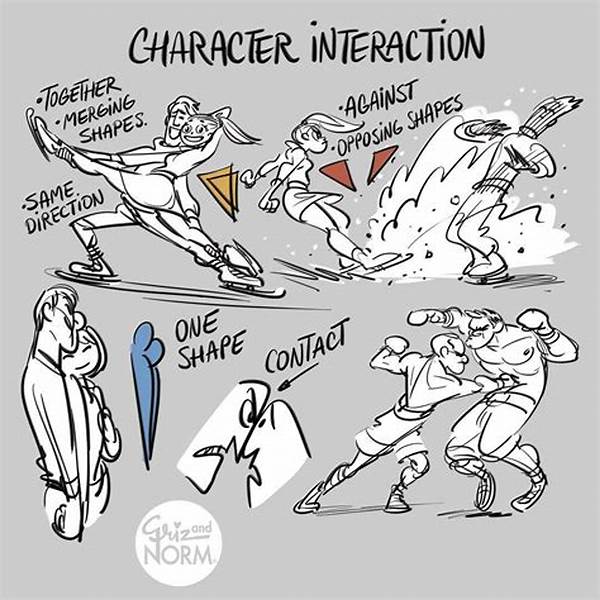Crafting believable characters that engage and resonate with audiences is an art form that writers continuously strive to master. The foundation of impactful storytelling often lies in the authenticity of character interactions. When characters speak and react in ways that mirror real-life behaviors and personalities, the audience becomes more invested in their journeys. Here, we delve into the techniques for realistic character interactions that can transform simple dialogues into powerful storytelling tools.
Understanding Character Motivations
The heart of any realistic interaction depends on understanding what drives your characters. Every character in a story has underlying motivations, goals, and fears that shape their behavior and dialogue. These elements are crucial in crafting interactions that feel genuine. Techniques for realistic character interactions start with developing a comprehensive backstory for each character. By doing so, a writer can ensure that dialogue and reactions make sense and feel authentic. Remember, real people act based on past experiences, beliefs, and desires, so characters should too. The alignment between what a character wants and how they try to achieve it creates dynamic and realistic exchanges that captivate readers.
Creating Natural Dialogue
1. Listen to Real Conversations: One of the key techniques for realistic character interactions is observing and listening to how people converse in real life. This can guide writers in developing authentic dialogue.
2. Use Subtext: Conversations are often layered and involve more than what’s being said. Implementing subtext effectively is another powerful technique for making character interactions nuanced and realistic.
3. Vary Speech Styles: Individual speech patterns make characters stand out. By giving each character a unique voice, you add depth to interactions and enhance realism.
4. Avoid Exposition: Characters shouldn’t talk just to inform the audience. Instead, their conversations should flow naturally without obvious exposition, which maintains believability.
5. Emulate Different Emotional States: People communicate differently when they’re happy, angry, or sad. Using this technique ensures realistic character interactions that are emotionally engaging.
Authentic Reactions and Responses
Creating characters who respond authentically to situations is essential. Techniques for realistic character interactions include writing responses that are consistent with the character’s established personality and history. When confronted with challenges, characters should react in ways that reflect their personal growth or their setbacks. By keeping characters’ reactions true to their nature, writers can build tension and maintain their audience’s trust. Detailed reactions often reveal deeper layers of a character and can surprise readers while still feeling believable.
Developing Relationship Dynamics
Building authentic relationships between characters requires subtlety and attention to detail. Techniques for realistic character interactions must include the nuances of relationships – whether they’re familial, romantic, or platonic. Conflicts, misunderstandings, closeness, and camaraderie all evolve through the ongoing interactions of the characters. By focusing on how characters relate to each other over time, writers can craft interactions that reflect the evolving nature of real-world relationships, lending credibility and depth to their narratives.
Consistency and Growth in Character Development
Realistic characters should evolve in response to their experiences. One of the most effective techniques for realistic character interactions is ensuring consistency in character development while allowing room for growth. Characters that show growth will naturally create more dynamic dialogues and interactions, as their perspectives and reactions shift with evolving circumstances. Providing opportunities for characters to change in response to their experiences will result in interactions that not only feel real but also enrich the narrative.
Engaging in Meaningful Conflict
Conflict is a cornerstone of storytelling that brings depth to character interactions. Techniques for realistic character interactions center on creating conflicts that are meaningful and resonate with the characters’ inner worlds. These conflicts can be external or internal, but they should always deepen the plot and afford characters opportunities to demonstrate their complexities. By weaving meaningful conflict into the story, writers can craft character interactions that are not only believable but also compelling.
Summary: Realism in Character Interaction
In summary, using techniques for realistic character interactions is integral to creating engaging narratives that resonate with audiences. These techniques involve understanding each character’s motivation, developing natural dialogue, ensuring authentic reactions, and focusing on relationship dynamics. Characters should mirror the complexities of real people, showcasing growth and variability in their interactions. When written with care, these interactions become pivotal elements of storytelling that strengthen the connection between the audience and the narrative, resulting in memorable and enduring stories.
